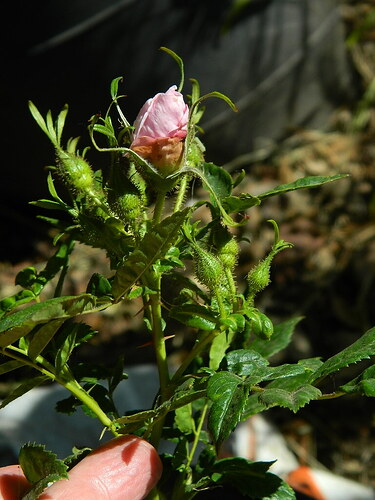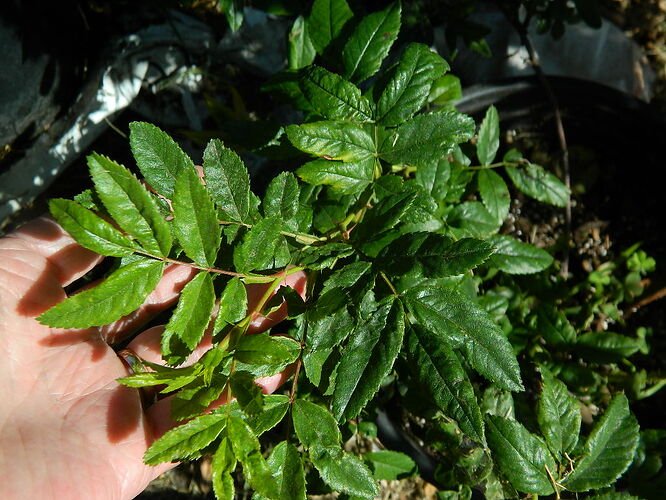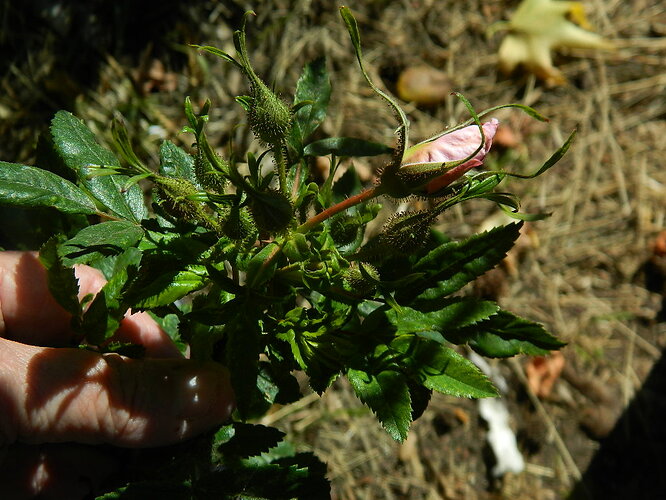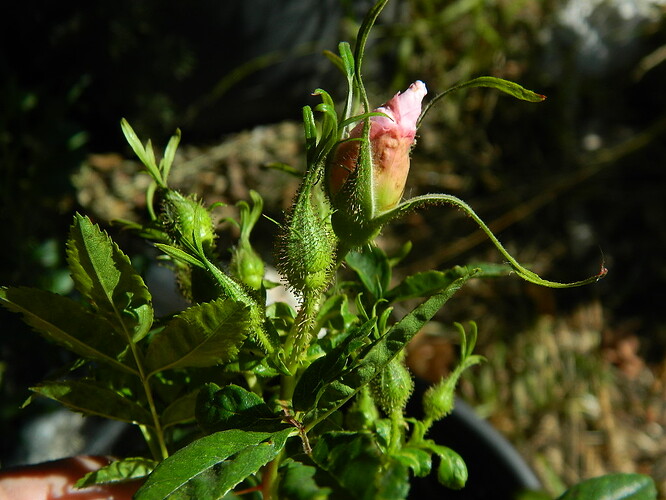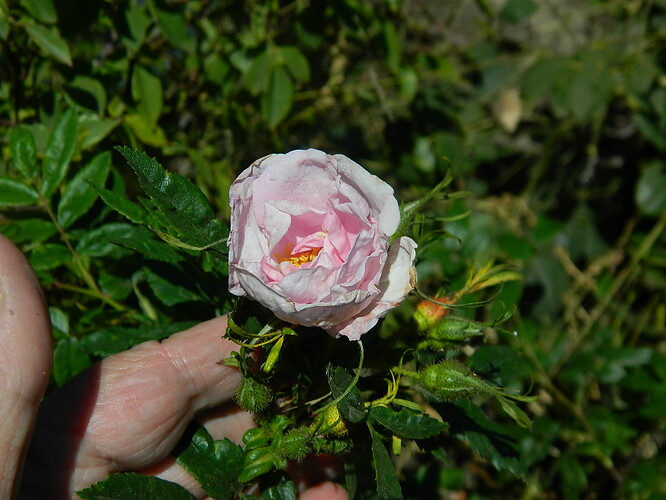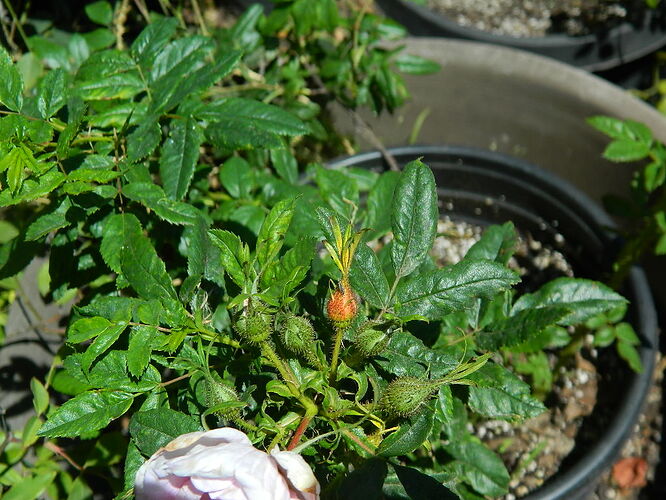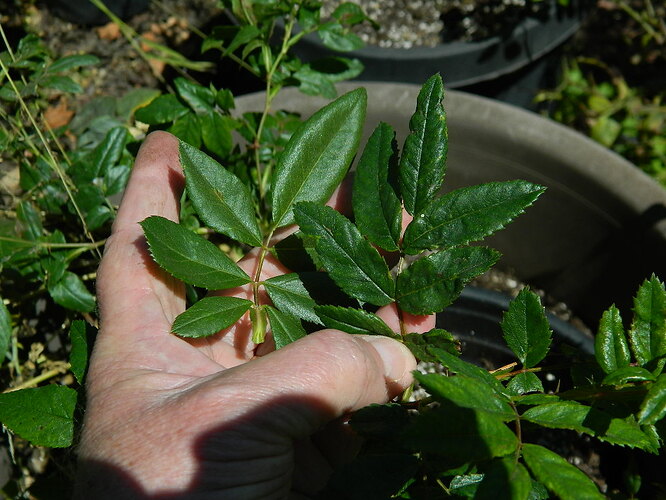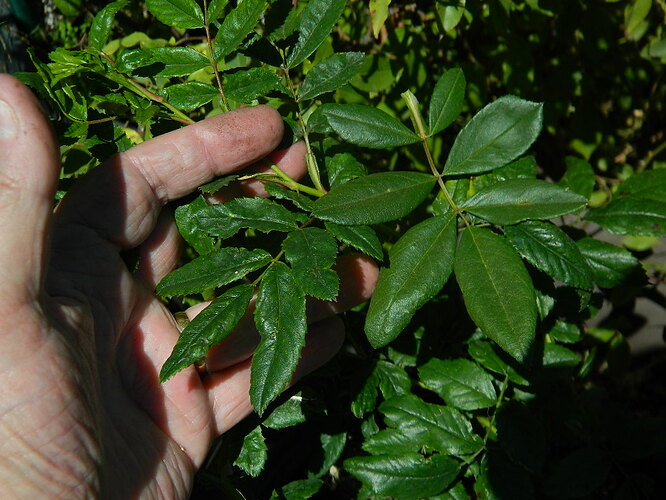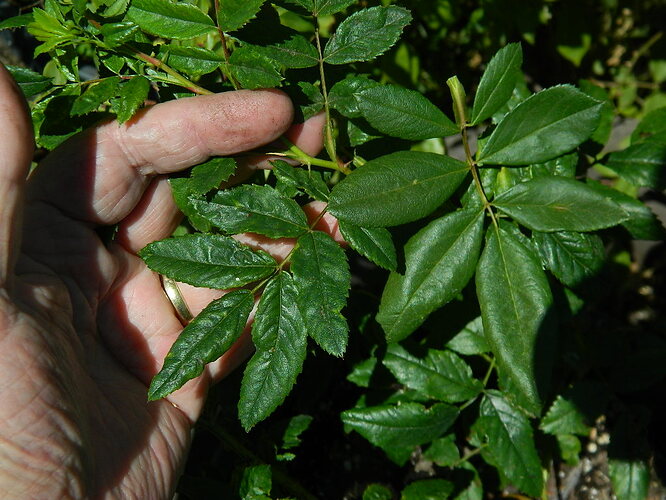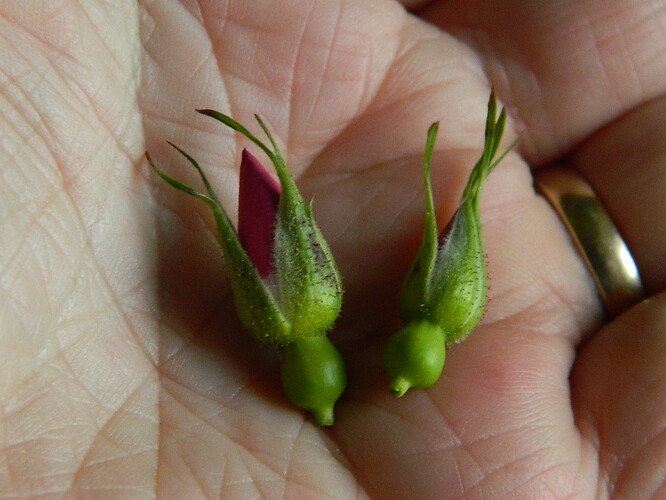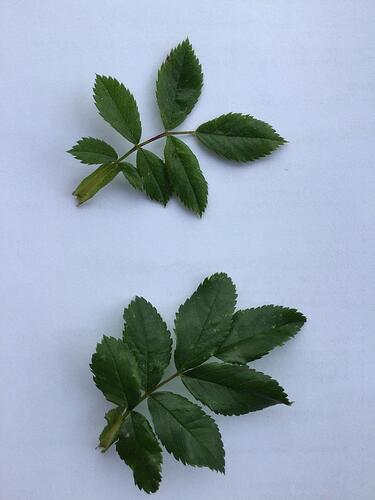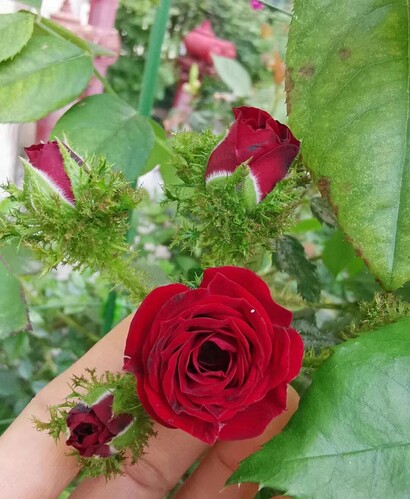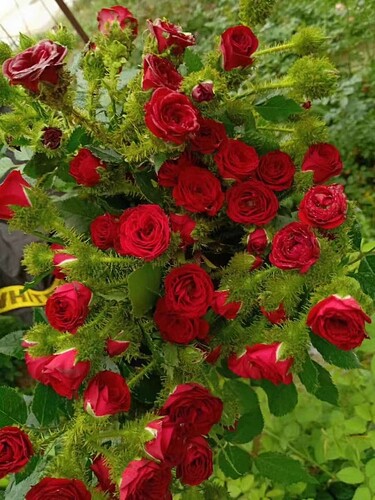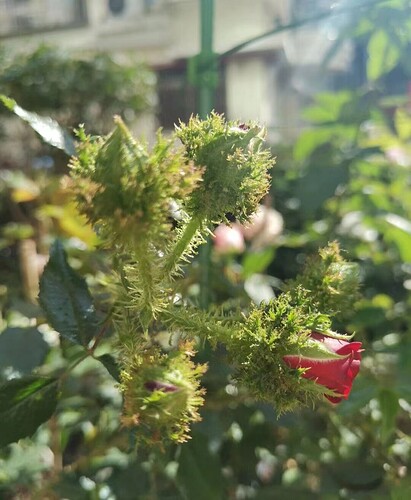I’d nearly lost this rose, but fortunately it is regenerating from the roots. The gentleman who shared it with me reports that the European photos of the variety on Help Me Find have a European OGR look to the foliage while this one has a decidedly American species look to it. What I find particularly intriguing about it is the scent to the plant parts. It’s decidedly “fruity”, like R. Foetida with an added “smoky” tone to it, resembling R. Fedtschenkoana. The buds are incredibly “mossy” with very elongated sepals. The foliage has a rather interesting look to it. I wondered if anyone had ever tried doing anything with it? I’m intrigued to try it with moss pollen and its pollen on minis.
Many thanks for directing our attention to this interesting rose.
Rose d’Orsay and Rose d’Amour are very similar. 'Rose d'Amour' Rose
Rose d’Orsay’ differs only slightly from ‘Rose d’Amour’ in being less vigorous and more inclined to sprawl if untethered. According to Graham Thomas, ‘Rose d’Orsay’ can be distinguished from ‘Rose d’Amour’ by the pair of prickles it always has under each leaf. I didn’t know either of the roses until now.
The thought has occurred to me before that ‘Rose d’Orsay’ might really be R. carolina ‘Plena’… your photo strongly resembles it at that stage, at least. Then again, it’s probably worth questioning the identification of any rose grown under either name. I bought a rose under the name ‘Rose d’Amour’ years ago from Brentwood Bay in Canada, and that one appears to be a variant of ‘Banshee’. I’ve tried the latter in crosses, but not yet the former. Whatever its name, that should be an interesting rose to work with, and is likely to be tetraploid. It might take a couple of generations to recover repeat bloom. Have you seen any open-pollinated hips form on yours?
Stefan
No, it’s never set hips, but it wasn’t in any condition to WANT to set hips before.
I’ve emailed the gentleman who shared it with me, who also grows Carolina plena to ask his impressions and observations about their differences. Those will be interesting to read as he’s quite a keen observer.
It is beautiful and intriguing, especially the elongated elegant buds and the moss-like texture of the sepals and the interesting-sounding scented plant parts. I hope lots of people decide to work with it.
Some illustration about D’Orsay from someone who grows it, D’amour and Carolina plena (among many others):
"Plena and D’orsay are distinct to me. Both are blooming here right now. Overall, plena is smaller. I would say the flowers, leaves and overall height are about half the size of D’orsay.
Plena blooms are about 1.25 inch across. The pink is a little lighter and has a warmer tone, especially toward the center. It has much less of the glandular scent, and that scent is not as fruity.
D’orsay blooms are up to about 2.25” across. The color is darker than Plena and slightly bluer.
I was originally going to say that D’orsay has darker foliage, but they are actually pretty close now that I looked closely. I still say that D’orsay foliage comes off looking overall slightly darker and plena is lighter and yellower. Thomas described D’orsay’s foliage as leaden. I think he was referring more to the dull sheen rather than a color. But not grayish in that dusty way like Fedtschenkoana. It’s more like how lead gets that cloudy look on the surface, or like what happens on a plum. But it doesn’t rub off.
Your observation about the hint of a smoky Fedtschenkoana and Foetida glandular scent on D’orsay is interesting. I think I know what you mean, and that’s an interesting way to describe it. My best scent description for it is Juicy Fruit gum! I notice that same scent less strongly on Virginiana and Virginiana plena.
I know there is also confusion with the above and Rose D’amour. The most obvious difference is that D’amour has a lot of red in the foliage, and it’s glossier."
I’ve further asked if D’amour has the pair of prickles beneath the stipules as D’Orsay does. And, I have taken photos of D’Orsay foliage compared to Basye’s Legacy, which contains Carolina alba. Very interesting (at least to me!). Legacy foliage is a bit larger in the photos. Legacy buds are also similar, though not as exaggerated with the glands and sepals.
Yes, both D’Orsay and D’amour have the paired prickles. Carolina plena above, D’Orsay below. Photo courtesy of Belmont.
This is not an Unconditional love of roses, the origin is unknown. The rose variety I saw online, named IP Man, may be from the movie IP Man, which looks like an enhanced version of Unconditional love. There are more thorns and glands, so that the leaves seem to have swollen thorns and glands
Ralph Moore bred for crested sepals and moss types for decades. He raised a number of seedlings which, in his wording, “expressed heavy mossing factor”, what he called the trait of exaggerated mossing on the sepals, ovaries and peduncles. Often, the “mossing factor” was so highly expressed, the foliage also expressed it through that “stippling” across the surface. Another expression he observed, and showed those of us who visited, were “winged stipules”. If you look closely at the foliage on the right side of this photo on Help Me Find, you will see the stippling from the “mossing factor” on it. '20-73-84 ' Rose Photo . “Dawn Crest” (MORsoucrest) often expresses the “winged stipules”.
Kim,
Did you try any crosses with D’Orsay last year?
Mark
Hi Mark, yes, I did. Nothing set ON it and I think it may have taken on a mini or two. There are many crosses waiting for planting.
